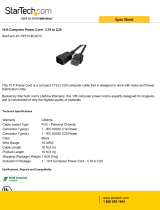.
Table of Contents
INTRODUCTION.............................................................................................................5
About This Guide....................................................................................................5
SYSTEM X X6 SYSTEM POWER OVERVIEW.........................................................................6
SYSTEM X X6 SYSTEM POWER SUPPLY UNIT (PSU)..........................................................6
900W AC PSU – Rating & Part Number Information..............................................6
1400W AC PSU – Rating & Part Number Information............................................6
750W DC PSU – Rating & Part Number Information..............................................6
80 PLUS.................................................................................................................8
X6 POWER SUPPLIES....................................................................................................9
X3850 X6 POWER SUPPLY PLACEMENT...........................................................................9
X3950 X6 POWER SUPPLY PLACEMENT.........................................................................10
POWER SUPPLY INSTALLATION AND ORDERING...............................................................11
POWER SUPPLY INPUT FEED WIRING FOR REDUNDANCY..................................................12
IMM2 POWER POLICIES..............................................................................................14
Setting a Power Policy.........................................................................................15
IMM2 POWER CAPPING AND POWER MONITORING.........................................................16
Enabling Power Capping.......................................................................................16
Power Monitoring and Power Allocation..............................................................17
Power History......................................................................................................18
SYSTEM X POWER MAXIMIZER......................................................................................19
SYSTEM X POWER CONFIGURATOR................................................................................20
SYSTEM X X6 PDU AND LINE CORD SELECTION...............................................................21
Switched and Monitored PDUs - North America..................................................21
Switched and Monitored PDUs - International.....................................................22
Enterprise PDUs - North America........................................................................23
Enterprise PDUs - International..........................................................................24
Front-end PDUs - North America........................................................................26
Front-end PDUs - International...........................................................................26
Universal Rack PDUs............................................................................................27
0U Basic PDUs - North America...........................................................................30
0U Basic PDUs - International.............................................................................30
SYSTEM X X6 POWER CORDS.......................................................................................31
System x x3850 X6 and x3950 X6 Worldwide PDU Power Cords..........................31
System x x3850 X6 and x3950 X6 North American Power Cords.........................32
System x x3850 X6 and x3950 X6 International Power Cords..............................33
TYPICAL POWER FOR COMMON X3850 X6 CONFIGURATIONS............................................34
CUSTOMIZED PDU CONFIGURATIONS............................................................................37
TYPICAL PDU CONFIGURATIONS...................................................................................37
1400W PSU Configuration Diagrams....................................................................37
900W PSU Configuration Diagrams......................................................................59
900W & 1400W PSU Combination Configuration Diagrams..................................80
System x North American PDUs Line Cords.........................................................85
System x International PDUs Line Cords..............................................................90
REFERENCE MATERIAL................................................................................................96
What is N+N and N+1 PSU Redundancy...............................................................96
3

























